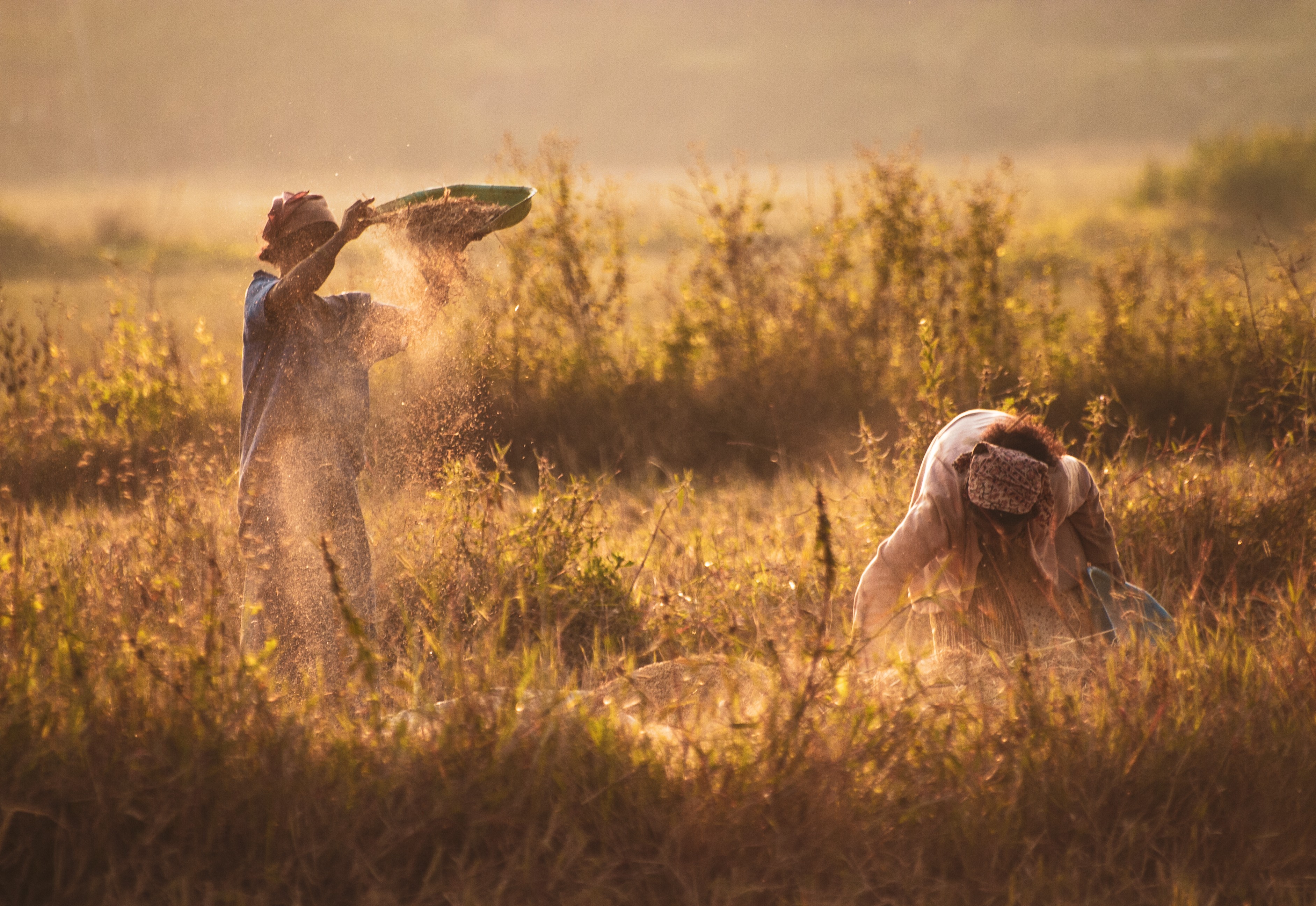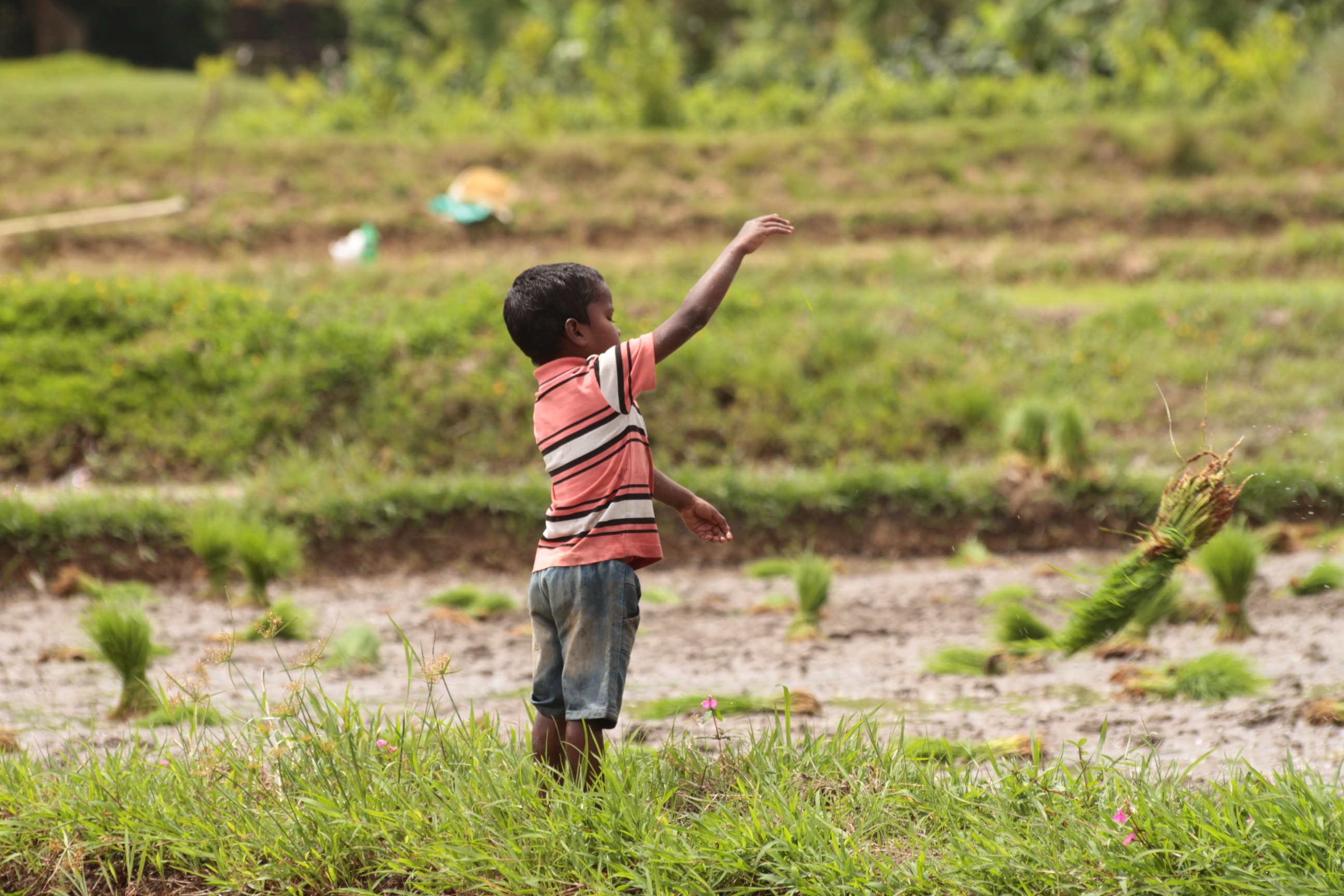
May 9, 2025
Wetlands, the legacy of a landscape

By Erica Berry


My father is an altruistic, son of the soil. Despite having lived a majority of his life away from his motherland that is Kodagu, it would now almost seem like he never left. The landscape has been deeply etched, worn on his skin and in his heart. Every bel or field, every thota or farm, every baane or meadow, every thod or stream, every mandh or ground, every betta or mountain, every kundh, every male, every kaad, every thevva, kurot or padbudhna jaaga is mapped in memory.
Our indigenous language, Kodava, has over 42 words to describe the every fold of our ancient landscape. This story is neither about my dad or the Kodava language, but it is upon the very landscape that births all these stories, a river’s, mine and a million others. Distance makes the heart grow fonder. Having pursued a career outside of his home district, my father had a heightened sense of attachment to his people, his community and his culture. We promptly made the 12 hour journey one way, every single time that boarding school holidays and any event happened back home at the same time. Without jumping into details about family traditions, let it be known that every Kodava family celebrates and worships their ancestor, in a central ancestral house. More often than not, this house is built into the first hill, facing a smattering of man-made wetlands, the rice or paddy fields.
Before Coorg or Kodagu became a district of Karnataka state, before India got independence, before coffee became a commodity, for hundreds, if not thousands of years, life in this part of the Western Ghats revolved around these rice paddies. Since time immemorial, grains of rice or Nellaki as we call it, has been central to all our sacred rituals, traditions and any new beginning. Our choice as a community, for our sacred offering to our ancestors, our gods and our spirits, has always been a fistful of grains of rice. It accompanies the sacred lamp and can be today found at the altar of any Kodava home, no matter where they live in the world. If you ask me, how old are the paddy fields, how old are the rice growing traditions of the Kodavas, I would have to say, as old as tradition itself. Scientifically, I haven’t been able to find a date, but if one goes by folklore, then it is from the time of the gods and whether you practice a religion or believe in God or not, we can be certain that it was from a time surely, long, long ago.
What we certainly have received, passed down from generation to generation, from ancestor to ancestor to great grandfather, grandfather, father and finally son, is wisdom. Traditional wisdom, how to grow grain and the land to grow it. But imagine the beginning. When hunters and pastoralists slowly became agriculturists. Our ancestors found balance between both. How they must have tamed the famed monsoons, braved the rains as they carved, inch after inch of available valley into flat field that grew gold. To domesticate the wild terrain, to seek beyond the thick forests, to find and mould the appropriate land into life supporting production fields of staple, rice was no mean feat. They perfected the craft of capturing water, allowing violent storms to be caressed gently from one field to another, to another, through every family’s, and back into the raging rivers. I wonder if they knew they were recharging ground water. I wonder if they knew they were shaping the environment to be more hospitable. But one thing was for certain, the rice grew. And so did they. As people, as families, as a culture, as a community. The more the rice you grew, the more food you had, the more mouths you could feed. The warriors that were our ancestors learnt to fight the wild mountains of the western ghats, and turned it into a home of abundance. The abundance of rice, with due thanks given to the holy deity of the region, the goddess and rightly so, the river Cauvery, was the platform on which the Kodavas famed hospitality firmly rested.
We fed anyone and everyone who we came across or came across us. A person’s wealth was counted upon the bags of rice they produced. Rice, grown on ancestrally shaped wetlands. Wetlands that provided life sustaining food and life giving water, that worked as prevention buffers for floodwater while also allowing the water to soak into underground aquifers, thereby allowing for streams and rivers to flow full and through out. This is what has allowed life to thrive. Both here in Kodagu, and all along the banks of every river born here. That includes over 80 million people currently, not counting the millions and millions of people who have lived and died by its waters, over time.
The River Cauvery, the River Lakshmantheertha and the Barapole are all celebrations of the natural workings of these Wetlands of Kodagu. These man-made wetlands are a heritage, having provided the people of the region the means to thrive. Between the bounty of wild game, foraged foods and harvested grain, Kodagu has been a veritable paradise for as far as one can remember. As long as clean air, fresh water and great food were the only priority for life, life thrived here. This mosaic of disjointed paddy fields, work together to also sequester enough water and carbon to be an ecological gold mine. It is a hotbed of biodiversity, contributing significantly to wetland flora and fauna, that in turn adds to making this region one of the eight hottest biodiversity hotspots in the world. But things change as things often do. Sir David Attenborough quotes in the documentary ‘A life on our planet’; “Nature once determined how we survive. Now we determine how nature survives.” These words ring true in the landscape of Kodagu. Our ancestors were shaped by the natural world, adapting to its rhythms and limitations. But with population growth, shifting priorities and dynamic and technological advancements, people now exert a profound influence on the natural landscape, with both, the potential to conserve or damage it. Family, community and the lands that fed them were the pillars of priority once, but today that has changed to survival or success within a cannabilistic, capitalistic economy. Like every rural area in India, the youth have constantly moved to greener pastures, and herein, greener pastures meaning the city. With less hands to work the lands, the value of the land was no longer central to lives here. Between colonialism, capitalism and coffee, the landscape changed drastically. The landscape affected the most, perhaps, are the man-made wetlands of Kodagu.
I specify man-made wetlands, because the high altitude wetlands which lie amidst the montane grassland ecosystem can be found within the protected areas of Kodagu district. The man-made wetlands lie lower in the shape of paddy fields and store rainwater within their heightened boundaries, allowing rainwater to recharge underground aquifers. This is what allows the rivers to flow through the year. The reason that this is crucial, is because if we have lost 1/5th of these paddy wetlands it would loosely translate to losing 1/5th of the river. This is a scary fact. From about Eighty Five Thousand Acres under paddy wetlands, we are now down to a region of about Sixty Thousand Acres. This is why this story is important.
The value of growing rice has vastly shifted. With a workforce that is hard to come by and shrinking profitability, many farmers in the region have invested to converting these paddy lands into coffee estates. Others, have either converted the land for commercial purposes or sold it altogether, taking what money they can get. Between the two and the growing demand in cities for a breath of fresh air or a fresh lease of life, thousands of acres of wetlands have been flatted or raised or concreted. This directly reduces the quantum of water that seeps back in to the ground. The water that is not saved, runs off immediately. This directly increases the risk of flood. One cannot blame the farmers either, who have to eke out a living on these small tracts of land. The current policies do not safeguard the growing of our staple, rice. In fact, a ruling allowed the conversion of these wetlands for commercial usage, and for economic reasons alone, there are many options to choose from, rather than growing paddy, that too in the traditional way. Although, increased conversion for short term economic gains will have dire impacts in the long run when it comes to food and water security. If lands that are sacred purely for their function of providing us life sustaining food and water, become commodified for leisure, what kind of future do we leave behind for coming generations. A harder future with less food and water. As we worship our ancestors, what will future generations say of us. That we left behind a less abundant world? One, where we destroy our ecosystem and, greed and folly walk hand in hand. Already, we have lost our erstwhile community lands. Where cows and buffaloes were grazed, seasonal mushrooms grew. These small baane or grasslands were doted with clumps of bamboo, the shoots of which were also a delicacy. Colocasia grew in abundance at the fringe of these wetlands. The wetlands are floodplains and host a plethora of small fauna and flora. Also crucial as nurseries for many species of birds, the conversion of these lands spell doom for future generations of birds and animals as well. Most of these common lands have either been fenced, converted to coffee or into housing. There is an interconnectedness that we have forgotten and a price we are paying for it already. Less than Twenty Five years ago here were around 27 families that tilled and ploughed and grew rice around our side of the village, now there are 4. Our wells running deeper isn’t just about emotion as much as it is illogical, even economically. You see, downstream, crores of rupees worth of industries depend solely on this water just as well. The conversion of these wetlands are a threat, not just to people, but industry and livelihoods that dote the banks of every river that is born here.
All is not lost, just yet. Hope arrives seasonally, just like the first rain after a long, dry summer.
There is a quiet revolution, a resilience to the change we are seeing. Young people from the district, witness to the changes during the lockdown enforced by Covid a few years ago, want to grow their own food again. Somewhere between three to five thousand acres that were left uncultivated were tilled, ploughed, sowed and harvested.
As the rain sings its melody outside my window, I hope even more people take to their fields this year. I hope they reap their harvests and celebrate come Puthari, our harvest festival, with fervour and feeling. I hope we can somehow keep growing rice. For the love of rice. For the love of the land and the birds and the fishes and the crabs. For the culture. For the communities. For fresh air, for fresh water and most importantly, for the future.
“Throw a seed and watch it grow, watch humanity unfold."
